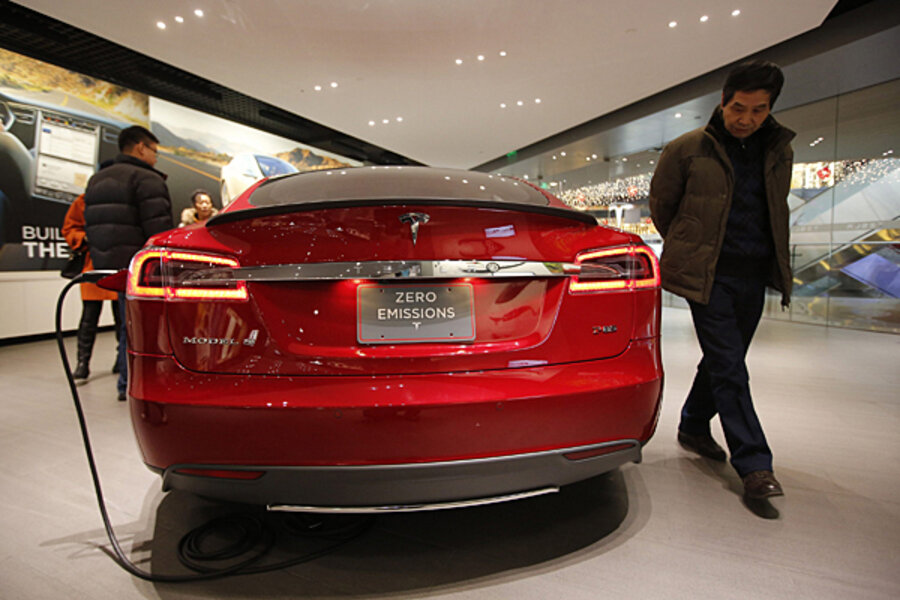Tesla Motors (TSLA) gigafactory: the automaker as energy company
Loading...
The world's most-hyped carmaker is looking more and more like an energy company.
The Tesla Motors gigafactory – a $5 billion plan for a sprawling battery factory in the Southwest United States – is a big bet on an evolving energy technology that is vital to the carmaker's future. Tesla Motors has always blurred the lines between the energy, technology, and automotive industries. But with its proposed gigafactory, and stronger ties with solar energy firm SolarCity, Tesla Motors aims to capitalize on the links between power, transportation, and innovation.
"Portable energy is the next big thing," Karl Brauer, senior analyst at Kelley Blue Book, says in a telephone interview. "If we can master it in the modern era – if we can make it cheaper and more effective – it’s going to make our lives easier. There's a huge long-term corporate play there. Elon Musk needs batteries for Tesla, but he can also use them to influence a lot of other industries."
Laptops, tablets, smartphones, and a host of other electronics are driving up demand for batteries that can stay charged longer, recharge more quickly, and degrade less over time. Energy storage is a crucial component of a transition to clean energy as intermittent renewables like wind and solar cannot provide a stable, baseload supply of electricity. Last December, Tesla announced a new project with sister company SolarCity to provide the batteries for residential and commercial solar installations.
The roughly 10-million-square-foot Tesla Motors gigafactory is another bold extension on the energy side of its operations. The battery manufacturing complex will employ 6,500 workers, according to Tesla, and produce more lithium-ion batteries than last year's total global output – enough to power 500,000 electric vehicles each year. It will run largely on solar and wind energy and will be built in a to-be-determined location in Arizona, Nevada, New Mexico, or Texas. The Palo Alto, Calif.-based company will invest $2 billion of its own money and is in talks with potential partners on the gigafactory, set to ramp up to full production by 2020.
Batteries pose a significant supply-chain risk to Tesla Motors, Mr. Brauer notes, because they are complex, expensive devices that are hard to replace if a supplier disappears. That's largely what happened to Fisker Automotive, a onetime Tesla competitor that declared bankruptcy after its battery-maker, A123 Systems, went out of business. By bringing its central component closer to home, and more under its own control, Tesla hopes to avoid the missteps of other electric carmakers.
"Having control over battery production is valuable to an electric-car company because it's the single most important component," Brauer says. "When you aren’t building your own batteries you’re at the mercy of your suppliers."
It's also a matter of scale and cost. Tesla Motors (and the electric car industry in general) is criticized for building cars that are out of most consumers' price range and cannot reach mass audiences. Tesla delivered 22,477 vehicles last year. General Motors delivered 9.7 million. With its gigafactory, Tesla hopes to shift that balance.
"As we at Tesla reach for our goal of producing a mass market electric car in approximately three years, we have an opportunity to leverage our projected demand for lithium ion batteries to reduce their cost faster than previously thought possible," the company wrote in a blog post. "[A large-scale factory] will allow us to achieve economies of scale and minimize costs through innovative manufacturing, reduction of logistics waste, optimization of co-located processes and reduced overhead."








